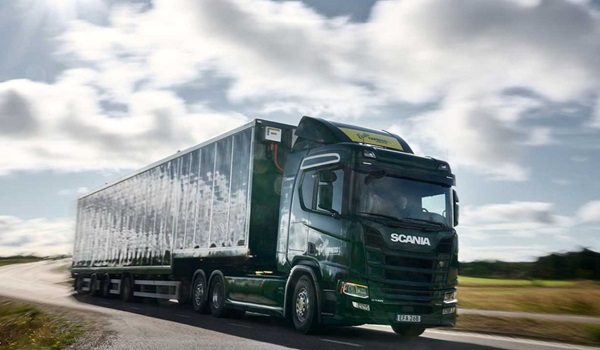
The trucks electrical propulsion is generated by the vehicle’s own solar cells.
Scania’s intensive development of tomorrow’s electrified transport solutions is inspiring many new technological ideas. One of those is a project to develop a solar-powered truck, whose electrical propulsion is generated by the vehicle’s own solar cells, sited in a trailer that’s attached to a hybrid-electric vehicle.
It’s an imaginative undertaking that has seen a small teamwork in an agile setting to come up with solutions that both build on Scania’s modular system and create new technologies. The finished prototype has been handed over to long-term Scania haulage customer and partner Ernst Express, who will test it in actual operational conditions on Swedish roads.
The starting point was the lithium-ion batteries that are used in battery-electric trucks. In the time that Scania has been working with that technology, they have seen the batteries become lighter, cheaper and more energy-dense. The questioned if the efficiency of the cells doubles, the cost halves or drops away a lot, is there a breakeven point?
An initial six-month pre-study in late 2019 and early 2020 made the team realise that it did make sense to explore this technology now. Once they’d received funding from the Swedish state innovation agency Vinnova, a full-scale project began in January 2021, with solar cell development by Uppsala University.
The plug-in hybrid truck/tractor with all the 'regular systems' (100 kWh energy storage) is connected to the trailer with additional batteries, which have 200 kWh energy storage and act as a ‘power bank’ for the truck, and they’re connected to the solar panel box that charges the power bank,” he explains.
The data already indicates that solar panels do contribute significantly to the energy you’re getting for the truck, and it’s one part of the overall puzzle when it comes to decarbonised transport. The first thing Scania needed to find out is ‘does this make sense?’ And to answer that: yes, it’s good enough to work on the scale that they are doing now. Source